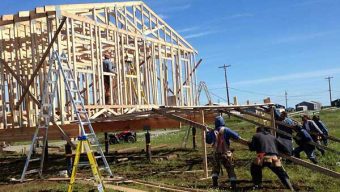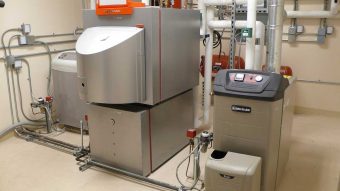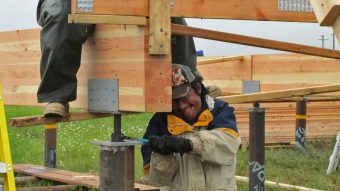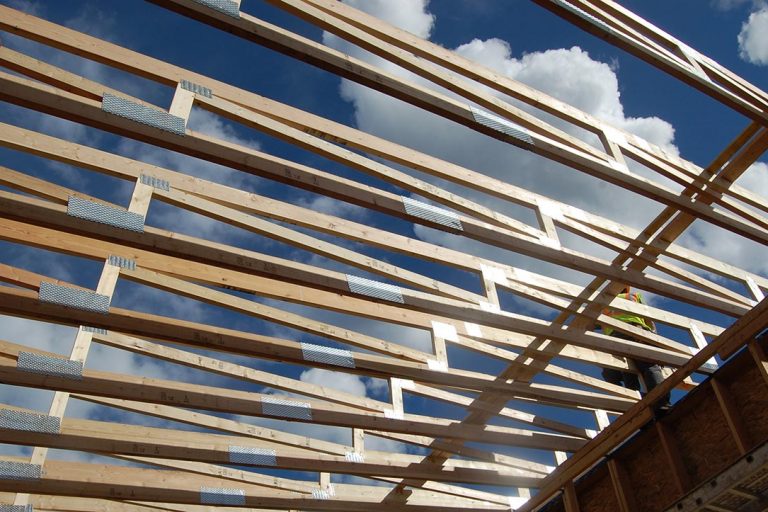REMOTE Wall
One of the greatest challenges of building in a cold climate is managing moisture in the building envelope. That’s because of a familiar concept called vapor drive, in which water seeks to go from a more concentrated state to a less concentrated state. What does this mean for your building?
When it’s cold outside, warm moist air from inside will try to escape outdoors through any means possible–leaks around your windows and doors, gaps in the roof, and–inevitably–through small holes in your wall vapor barrier. When vapor hits a cold surface, in this case, your plywood sheathing, it condenses into water form. Then it either freezes or remains liquid until the spring, when the walls will dry to the outside.
It’s a cycle that conventional stick-framed structures in Alaska have endured since the 1950s.
When people started putting foam board insulation on the outside of their walls to save energy, it changed the entire moisture behavior of the wall. Because foam is vapor impermeable, moisture was no longer able to dry to the outside. Instead, it would remain stuck in the wall cavity, eventually causing mold and moisture damage over the years.
The Cold Climate Housing Research Center developed the REMOTE Wall System (Residential Exterior Membrane Outside insulation TEchnique) to address this problem. Adapted from the PERSIST wall technique used in northern Canada, the REMOTE wall moves the majority of the insulation to the outside of the wall in order to keep the sheathing warm and dry.
The vapor barrier is applied outside of the sheathing, rather than inside, and then foam board is attached on the vapor barrier. The key is to use enough foam so that two-thirds of the total wall R-value is located on the outside. This keeps the dew point (the point at which vapor turns to water) outside the vapor barrier and warm-side wall cavities, ensuring the framing members stay warm and dry.
CCHRC has tested and refined the REMOTE wall in various climates of Alaska. Our resources include a detailed construction manual and a two-part video showing the step-by-step process of building a REMOTE wall.
Related Resources
| Title | Resource Link |
|---|---|
| REMOTE Manual | |
| Remote Wall Part 1 | |
| REMOTE Wall Part 2 | |
| REMOTE Wall Snapshot |













